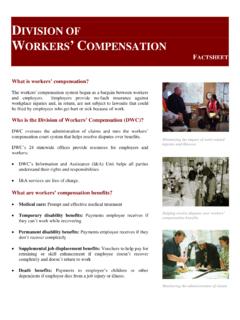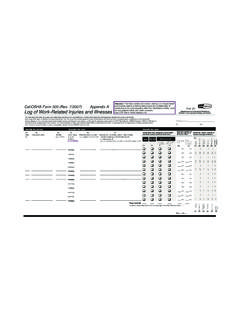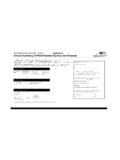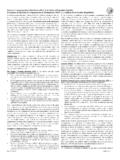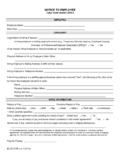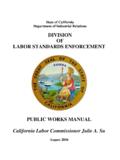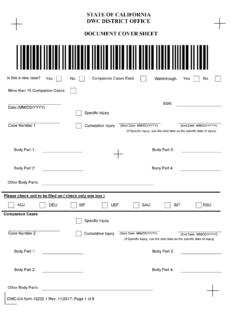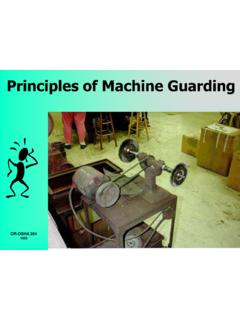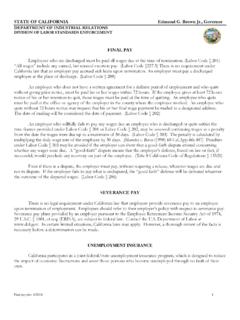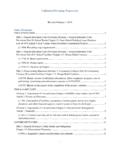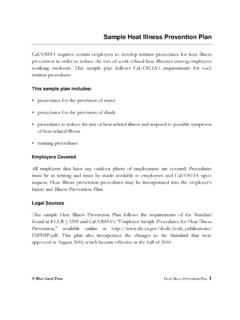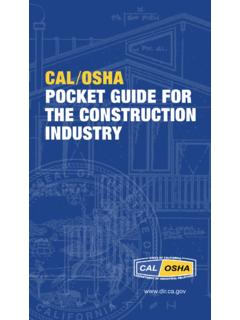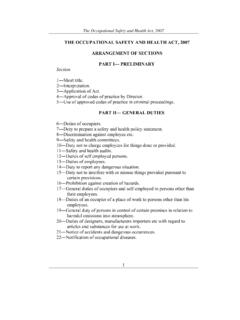Transcription of Cal/OSHA Publications Unit Rev. May 2019
1 Page 1 of 12 HIPP /Sample procedures Rev. EMPLOYER SAMPLE procedures FOR heat illness prevention Cal/OSHA Publications Unit Rev. May 2019 California employers with any outdoor places of employment must comply with the heat illness prevention standard, California Code of Regulations, title 8, section 3395 (8 CCR 3395). These procedures have been created to assist employers in establishing their own heat illness prevention procedures and to reduce the risk of work-related heat illnesses to their employees. These procedures are not intended to supersede or replace the application of any other title 8 sections, particularly 8 CCR 3203, Injury and illness prevention Program (IIPP), which requires an employer to establish, implement, and maintain an effective IIPP.
2 You may integrate your heat illness prevention procedures into your IIPP. You must also be aware that other standards also apply to heat illness prevention , such as the construction, agriculture, and general industry requirements to provide drinking water, first aid, and emergency response. Note: These procedures describe the minimum essential heat illness prevention steps applicable to most outdoor work settings. In work environments where there is a higher risk for heat illness ( , during a heat wave or other severe working or environmental conditions), you must exercise greater caution and employ protective measures beyond what is listed in this document, as needed to protect employees.
3 To effectively establish your company procedures , carefully review the key elements listed in this document, as well as the examples provided, then develop written procedures applicable to your workplace. The heat illness prevention Plan must be written in English and the language understood by the majority of the employees and must be available at the worksite. Implement procedures , train employees and supervisors on your company procedures , and follow-up to ensure your procedures are fulfilled. To tailor these procedures to your work activities, evaluate and consider the specific conditions present at your site such as: 1.
4 The size of the crew. 2. The length of the work-shift. 3. The ambient temperature (which can either be taken using a simple thermometer or estimated by monitoring the weather). Page 2 of 12 HIPP /Sample procedures Rev. 4. Additional sources of heat or the use of personal protective equipment that may increase the body s heat burden. 5. Again, these sample procedures do not include every workplace scenario so it is crucial that you take into account and evaluate conditions found in your individual workplace that are likely to cause a heat illness . Mandatory requirements for written procedures must also do the following: 1.
5 Identify the person(s) responsible for the particular task(s) ( , s upervisor, foreman, safety coordinator, crew l eader). 2. Describe in detail the steps required to carry out the task and ensure that the task is accomplished successfully, including the number and size of water containers and shade structures; distance to their placement; and frequency of water replenishment, water breaks/reminders, weather-tracking, etc. For additional information, see the Enforcement Q&A. 3. Specify how you will communicate these procedures to your employees, particularly the person(s) assigned to be responsible for them, and how you will verify that the procedures and instructions are being followed.
6 Page 3 of 12 HIPP /Sample procedures Rev. (Employer's Name)The following designated person(s) ( , program administrator, safety coordinator, supervisor, foreman, field supervisor, crew leader) has (have) the authority and responsibility for implementing the provisions of this program at this worksite. Name/Title/Phone Number : Choose the items below that are applicable to your work operations for water and shade provision, high heat procedures , acclimatization methods, and emergency procedures , and add additional language to specify how your company intends to implement these provisions at the job site.
7 procedures for the Provision of Water: Drinking water containers (5 to 10 gallons each) will be brought to the site so that at least two quartsper employee are available at the start of the shift. All employees, whether working individually or insmaller crews, will have access to drinking water. Paper cones or bags of disposable cups and the necessary cup dispensers will be made available toemployees and will be kept clean until used. As part of the Effective Replenishment procedures , the water level of all containers will be checkedperiodically ( , every hour, every 30 minutes) and more frequently when the temperature rises.
8 Watercontainers will be refilled with cool water when the water level within a container drops below 50percent. Additional water containers ( , five-gallon bottles) will be delivered to replace water asneeded. Water will be fresh, pure, suitably cool, and provided to employees free of charge. Supervisors willvisually examine the water and pour some on their skin to ensure that the water is suitably cool. Duringhot weather, the water must be cooler than the ambient temperature, but not so cool as to causediscomfort. Water containers will be located as close as practicable to the areas where employees are working(depending on the working conditions and layout of the worksite) to encourage the frequent drinking ofwater.
9 If field terrain prevents the water from being placed within a reasonable distance from theemployees, bottled water or personal water containers will be made available so that employees canhave drinking water readily accessible. Since water containers are smaller than shade structures, they can be placed closer to employeesPage 4 of 12 HIPP /Sample procedures Rev. than shade structures. Placing water only in designated shade areas or where toilet facilities are located is not sufficient. When employees are working across large areas, water will be placed in multiple locations.
10 For example, on a multi-story construction site, water will be placed in a safely accessible location on every floor where employees are working. All water containers will be kept in a sanitary condition. Water from non-approved or non-testedwater sources ( , untested wells) is not acceptable. If hoses or connections are used, they must beapproved for potable drinking water systems, as shown on the manufacturer s label. Daily, employees will be reminded of the location of the water coolers and of the importance ofdrinking water frequently. When the temperature exceeds, or is expected to exceed, 80 degreesFahrenheit, brief tailgate meetings will be held with employees each morning to review theimportance of drinking water, the number and schedule of water and rest breaks, and the signs andsymptoms of heat illness .
